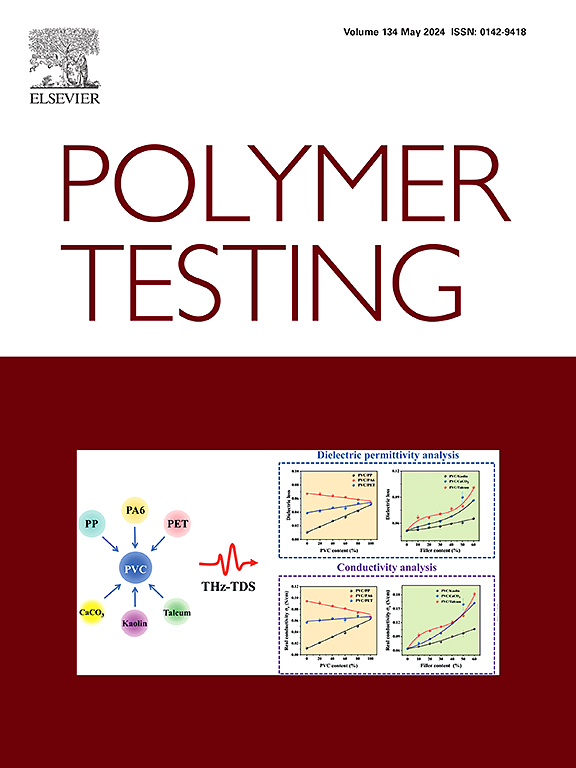Long-term oxygen plasma etching of UDMA:TEGDMA methacrylate resin: Etching rate and physical property changes
IF 5
2区 材料科学
Q1 MATERIALS SCIENCE, CHARACTERIZATION & TESTING
引用次数: 0
Abstract
The effect of low-pressure oxygen plasma etching on the physical properties of a dental photopolymer, namely UDMA:TEGDMA in 3:1 wt ratio, was investigated. Samples of the photopolymer were exposed to oxygen plasma from 10 to 120 min time intervals at different power (60, 100 and 140 W) and pressure (0.2, 0.4, and 0.6 mbar) conditions. The etching rate and changes in the surface roughness of the sample were measured with white light interferometry, while the optical properties and chemical changes were monitored by optical and Raman spectroscopy, respectively. It was found that by controlling the power and pressure parameters, steady etching rates can be set up in the 0.11–0.48 μm/min range. Longer etching times (e.g. above 1 h) were found to increase the surface roughness of the polymer significantly, while reducing its optical transparency. This loss in transparency was successfully restored by depositing a second polymer layer on top of the plasma-etched one. Raman spectroscopy investigations revealed that the degree of conversion, the amount of aromatic molecules and the introduced stress are all depend on the applied etching pressure and power conditions. Actinometry with Ar was performed to measure the internal plasma parameters, and the measured etching rates and observed physical-chemical property changes were correlated with the electron temperature and atomic O densities.
UDMA:TEGDMA 甲基丙烯酸酯树脂的长期氧等离子蚀刻:蚀刻速率和物理性质变化
本文章由计算机程序翻译,如有差异,请以英文原文为准。
求助全文
约1分钟内获得全文
求助全文
来源期刊

Polymer Testing
工程技术-材料科学:表征与测试
CiteScore
10.70
自引率
5.90%
发文量
328
审稿时长
44 days
期刊介绍:
Polymer Testing focuses on the testing, analysis and characterization of polymer materials, including both synthetic and natural or biobased polymers. Novel testing methods and the testing of novel polymeric materials in bulk, solution and dispersion is covered. In addition, we welcome the submission of the testing of polymeric materials for a wide range of applications and industrial products as well as nanoscale characterization.
The scope includes but is not limited to the following main topics:
Novel testing methods and Chemical analysis
• mechanical, thermal, electrical, chemical, imaging, spectroscopy, scattering and rheology
Physical properties and behaviour of novel polymer systems
• nanoscale properties, morphology, transport properties
Degradation and recycling of polymeric materials when combined with novel testing or characterization methods
• degradation, biodegradation, ageing and fire retardancy
Modelling and Simulation work will be only considered when it is linked to new or previously published experimental results.
 求助内容:
求助内容: 应助结果提醒方式:
应助结果提醒方式:


